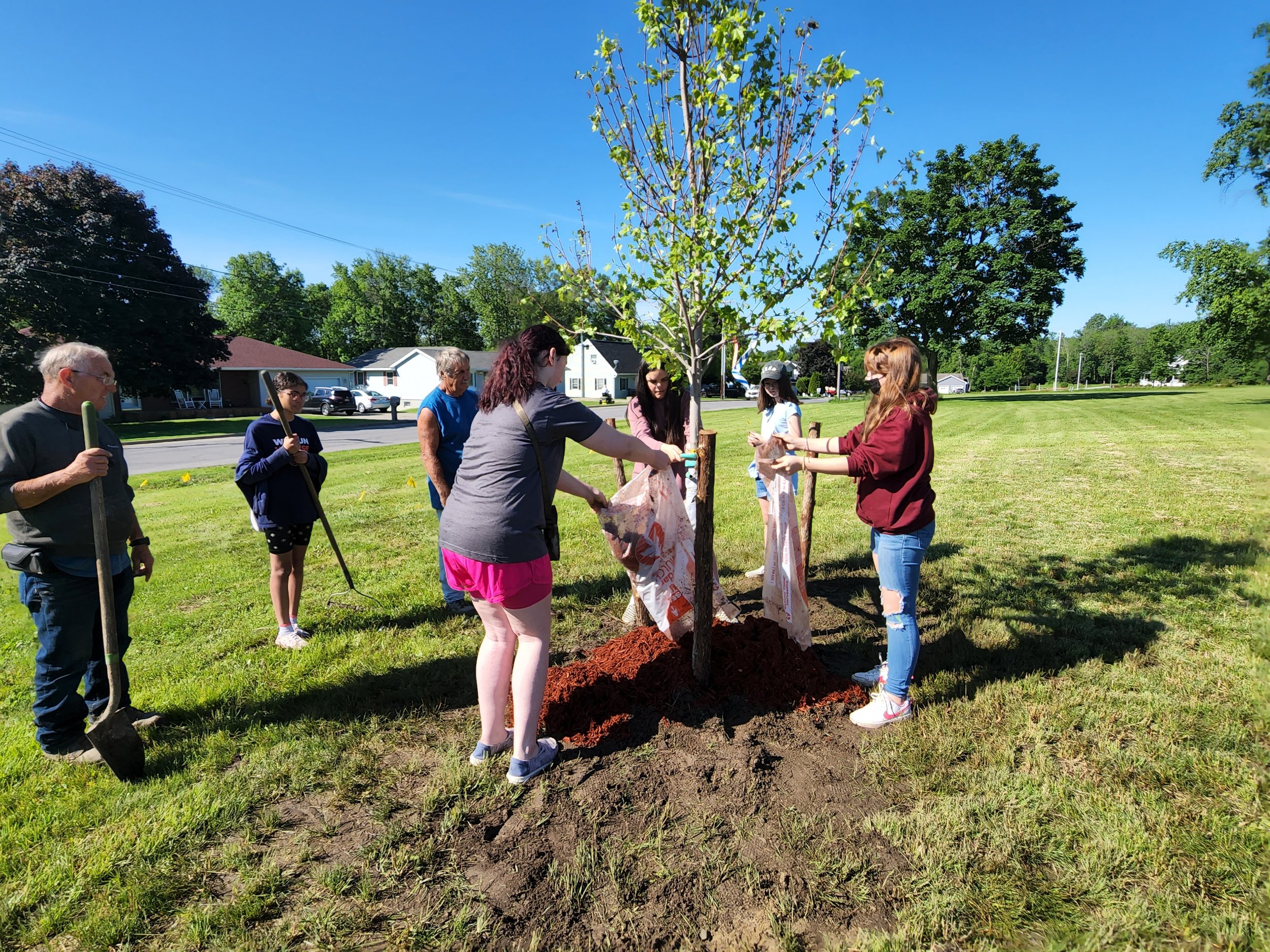Capital projects can be very beneficial for a school district. Upgrades in things like technology, safety, and infrastructure are so important, but there can be drawbacks too. Through the W5 project, the 6th graders at Madison Elementary School in Massena, NY learned a lot about climate change and the role of the construction industry this year.
The Massena Central School District is going through a three-year capital project. Major renovations are underway at Madison Elementary. The 6th graders saw dozens of extra vehicles in the parking lots and around the school, along with cranes and numerous other pieces of heavy equipment on-site every day for the last two years. The children decided to work on the theme of Climate Change and to learn about how their everyday activities, as well as construction, can affect the climate and local environment.
The students initially learned about the effects of climate change around the planet and were in awe. Then they studied the data on their own town’s monthly average temperatures and precipitation amounts for the last 150 years. They graphed this data and learned that winters are becoming much milder while summers are becoming much dryer in Northern New York. Climate change is not just affecting far-away places, it is affecting their community too.
Due to the construction going on at their school this year, the entire 6th grade spent the 1st semester learning all together in the school’s cafeteria and the 2nd semester in the gymnasium. They listened to drills, saws and jack hammers every day. This situation prompted the children to investigate how construction can add greenhouse gases to the atmosphere. They calculated their own and their families’ carbon footprints to compare with the average footprint. They learned that the United Nations’ goal is for every human to produce only two tons of carbon dioxide each year, but their carbon footprints were much higher than that.
With the knowledge of how much CO2 everyone was producing and how much all the construction-related vehicles and equipment at their school were adding to the environment, the students researched ways to make small changes that could reduce their carbon footprint. If many people all made these small changes, it could have very positive effects on the environment. They created carbon footprint posters and displayed them around the school to teach all the other students these simple changes everyone can take. Moreover, they worked with several other students to plant maple trees around the school. They indeed learned that trees are great carbon sinks, and that maple trees over the course of their lives can absorb and store a lot of carbon, as well as clean the air and provide shade and beauty for decades!
The Alcoa W5 project activities at Madison Elementary School support the following SDGs:






